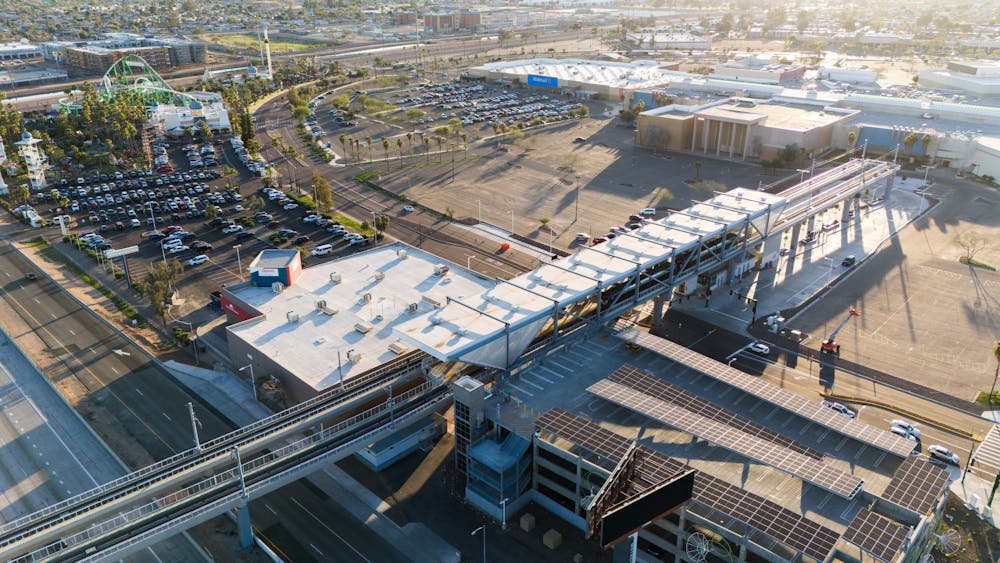Valley representatives can experience a new landmark in public transportation with the expansion of the light rail as its construction features fiber-reinforced concrete for the first time in the United States.
Valley Metro opened its Northwest Expansion Phase II expansion on Jan. 27, which extends Valley Metro light rail line over the I-17. The expansion added three stations, including the system's first-ever elevated station and a transit center for West Valley commuters.
READ MORE: Valley Metro completes its 'Extension Phase II' two years ahead of schedule
Included in the list of firsts for the state is a revolutionary form of concrete used in the construction of the new tracks. This material is called fiber-reinforced concrete and utilizes tiny steel fibers mixed with concrete before it is poured to increase strength.
However, the production of fiber-reinforced concrete is greener than its counterpart, and reduces the steel used in construction.
"We're reducing greenhouse gases, we're saving all that energy that doesn't have to go into the production of cement for concrete," Andrew Haines, an engineering project manager on the Northwest Expansion said. "The production of the fiber-reinforced concrete is greener than concrete used in the past because there's no need for rebar."
Barzin Mobasher, professor of civil and environmental engineering in the School of Sustainable Engineering and the Built Environment, proposed the idea of fiber-reinforced concrete.
"After a couple of weeks, they liked the idea, but then they came back and they asked me, what does it take to take all of the rebar out," Mobasher said "To have a rebar-free section, what we need to do is validate, meaning we have to simulate what happens to a direct slab for its entire life duration, which is estimated at around 45 years.”
To do this, Mobasher worked with his lab to do a fatigue test on a slab of the fiber-reinforced concrete, applying a load every four seconds. First, the concrete would be tested in good condition. Then, Mobasher and his lab would crack the concrete and continue running tests that would simulate a train passing over it.
"We are reproducing the effects of 45 years in a matter of eight or nine days," Mobasher said. "It's stimulating the train passing (over) it, and it passed with flying colors."
The use of fiber-reinforced concrete also reduced the total cost of track construction. Mobasher said the initial estimate was $17 million per mile of track, but the introduction of fiber-reinforced concrete cut the cost to $5.3 million per mile of track.
Not just money was saved; the total construction time was about halved from 231 days to just 121, according to ASU News. With rebar, steel reinforced must be laid down and prepared on-site, not including transportation time. 500 million tons of rebar are used every year in reinforced concrete, and reducing that number has the potential for large impacts on construction and sustainability.
This project is not the end of fiber-reinforced concrete, Mobasher said some public transportation systems from around the world are interested in the method Valley Metro used.
"I've had people in Torino (Turin), Italy who are very interested in using exactly the same thing for their project," Mobasher said. "It's been already applied in the metro lining tracks slabs in the city of Montreal."
Reducing the cost of public transportation systems could create better access for all citizens of Phoenix.
"It ties into multiple means of transportation, including our bus service. So it's about making transportation available to all," Phoenix Councilmember Kesha Hodge Washington said.
Edited by River Graziano, Shane Brennan and Caera Learmonth.
Reach the reporters at dgoacher@asu.edu and gnavar10@asu.edu follow @DameTimeNews and @GhadielN on X.
Like The State Press on Facebook and follow @statepress on X.




